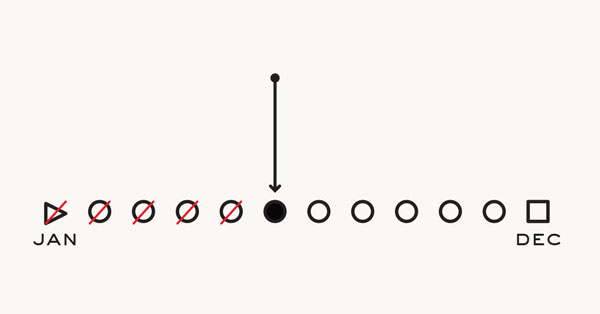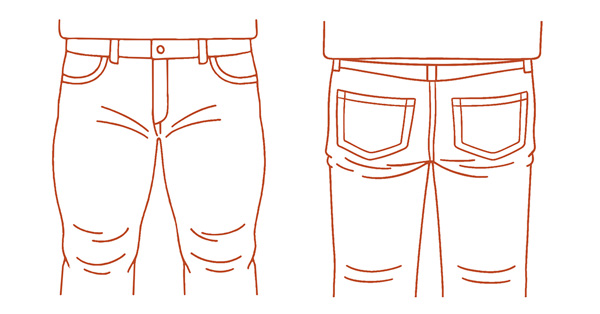Check out Part 1 for nailing your fantasy football picks where Lheep discusses getting your best quarterbacks and running backs.
Now that you have a general idea of the strategy behind successfully drafting quarterbacks and running backs, it’s time to dive right into the pass catchers. The NFL has been evolving into a passing league ever since the St. Louis Rams trotted out the “Greatest Show on Turf,” and it hasn’t looked back since. It’s time to reconsider the cliched fantasy mantra of stockpiling running backs and realize that receiving talent is equally valuable.
Wide Receivers/Tight Ends
Again, I love to harp on the opportunities each wide receiver/tight end has in their respective offenses. Ranking pass-catchers is not too different than ranking running backs – except for the fact that receiver production is directly tied to the skills of their quarterback. For this reason, avoid drafting Buffalo, Oakland and St. Louis receivers in higher rounds like you would avoid actually going to any of those grimy-ass cities.
“Receiver Targets” is a valuable statistic when it comes to deciding between two seemingly identical receivers. For example, a player like “Rowdy” Roddy White on the Falcons and Greg Jennings of the Packers are generally drafted in close proximity to one another. It is in these scenarios where the number of targets should serve as a “tie-breaker” of sorts. Roddy White was thrown to a total of 165 times last season, where Jennings was targeted 118 times. That is a differential of 47 throws – considering NFL quarterbacks complete passes at a 60% clip, it equates out to roughly 28 more big play opportunities for Roddy White.
Considering one big play could spell the difference between a victory and a sour defeat, draft your receiving corps wisely! As a reference, I have included the number of targets for each receiver in this handy chart below – keep in mind this is in no way a ranking of fantasy receiver prospects, but rather a way to help you decide between receiver “A” and receiver “B” (an asterisk* represents a player that has since switched teams).
| PLAYER | TEAM | # OF TARGETS |
| ANDRE JOHNSON | TEXANS | 171 |
| RODDY WHITE | FALCONS | 165 |
| WES WELKER | PATRIOTS | 162 |
| STEVE SMITH | GIANTS | 157 |
| BRANDON MARSHALL* | DOLPHINS | 154 |
| LARRY FITZGERALD | CARDINALS | 153 |
| REGGIE WAYNE | COLTS | 149 |
| SANTONIO HOLMES* | JETS | 138 |
| RANDY MOSS | PATRIOTS | 138 |
| HINES WARD | STEELERS | 136 |
| CALVIN JOHNSON | LIONS | 136 |
| TJ HOUSHMANDZADEH | SEAHAWKS | 134 |
| DERRICK MASON | RAVENS | 134 |
| STEVE SMITH | PANTHERS | 129 |
| ANQUAN BOLDIN* | RAVENS | 128 |
| CHAD OCHOCINCO | BENGALS | 128 |
| MILES AUSTIN | COWBOYS | 124 |
| SIDNEY RICE | VIKINGS | 121 |
| SANTANA MOSS | REDSKINS | 120 |
| DESEAN JACKSON | EAGLES | 118 |
| GREG JENNINGS | PACKERS | 118 |
| DAVONE BESS | DOLPHINS | 113 |
| DONALD DRIVER | PACKERS | 112 |
| MIKE SIMS-WALKER | JAGUARS | 111 |
| TERRELL OWENS* | BENGALS | 109 |
Here’s another interesting statistic – the number of 1st downs that can be attributed to a receiver. Why is this statistic important? Last time I checked, NFL quarterbacks don’t throw to scrubs on a “must-convert” 3rd & 10” situation. The guys on this list are the “no-question” number 1 option on their respective teams which only means a plethora of opportunities to rack up them fantasy points!
| PLAYER | TEAM | # OF 1st DOWNS |
| REGGIE WAYNE | COLTS | 73 |
| WES WELKER | PATRIOTS | 71 |
| LARRY FITZGERALD | CARDINALS | 69 |
| ANDRE JOHNSON | TEXANS | 69 |
| SANTONIO HOLMES* | JETS | 63 |
| RANDY MOSS | PATRIOTS | 62 |
| ANTONIO GATES | CHARGERS | 61 |
| STEVE SMITH | GIANTS | 61 |
| MILES AUSTIN | COWBOYS | 59 |
| DALLAS CLARK | COLTS | 59 |
| SIDNEY RICE | VIKINGS | 58 |
| VINCENT JACKSON | CHARGERS | 58 |
| BRANDON MARSHALL* | DOLPHINS | 56 |
| HINES WARD | STEELERS | 56 |
| DERRICK MASON | RAVENS | 55 |
| CHAD OCHOCINCO | BENGALS | 55 |
| MARQUES COLSTON | SAINTS | 54 |
| TONY GONZALEZ | FALCONS | 54 |
| RODDY WHITE | FALCONS | 54 |
| TJ HOUSHMANDZADEH | SEAHAWKS | 52 |
| ANQUAN BOLDIN* | RAVENS | 49 |
| DONALD DRIVER | PACKERS | 49 |
| DAVONE BESS | DOLPHINS | 48 |
| GREG JENNINGS | PACKERS | 48 |
| JASON WITTEN | COWBOYS | 48 |
Look at both of these lists closely, and you will notice one glaring item. There is not a single tight end that was in the top 25 in targets last season, but there are three (3) tight ends that placed in the top 25 in “first-downs accrued”. These three guys are the cream of the crop at their respective positions. Last season, only eight tight ends were able to rake in 70+ catches, and of those players, only one (Dallas Clark) was able to hit the century mark.
Now of those eight tight ends, only three of them broke 1,000 yards receiving (Dallas Clark, Jason Witten and Antonio Gates). What this tells me is that elite fantasy tight ends are pretty scarce, but there is plenty of mediocre depth.
As a general strategy, reach for one of the elite tight ends if you are playing in a points-per-reception league. I generally start looking to draft a tight end in the fifth round – if no truly elite tight ends are available, you can pretty much hold off for a couple of rounds and nab one of the mediocre guys. While analyzing statistics, don’t forget the season that Texans tight end Owen Daniels was putting together before going down with a knee injury – this man had 40 catches for 519 yards and 5 touchdowns before getting hurt…in 8 GAMES.
Defense/Special Teams
Please, please, PLEASE wait until the final two rounds to draft a kicker…unless you are playing in a league with me. Defenses in particular are so hard to judge through a fantasy microscope because great NFL defenses don’t necessarily translate into the fantasy realm. The Titans, for example, have a reputation of fielding physical, tough defensive teams – but they play in a division where Peyton Manning, Andre Johnson and Maurice Jones-Drew do nothing but score touchdowns.
Take a long look at how defenses are scored in your fantasy leagues. I personally lean towards defenses that attack the quarterback, generate turnovers, play in an offensively challenged division and have a decent kick-return game. A Bills defense will most likely not even be drafted, but keep in mind they have a ball-hawking secondary and an excellent return game with CJ Spiller and Leodis McKelvin as return options. Keep an eye on this defense as a great spot-start during the season.
For deciding what kicker to draft, it’s my opinion that as long as you draft an actual starting NFL kicker, it’s pretty much a wash. Just for the sake of statistical charts, here is a list of the guys that connected on the most field goals last season.
| PLAYER | TEAM | FG MADE |
| DAVID AKERS | EAGLES | 30 |
| GARRETT HARTLEY | SAINTS | 28 |
| ROB BIRONAS | TITANS | 28 |
| RYAN LONGWELL | VIKINGS | 27 |
| MASON CROSBY | PACKERS | 27 |
| STEPHEN GOSTKOWSKI | PATRIOTS | 27 |
| ROBBIE GOULD | BEARS | 26 |
| NATE KAEDING | CHARGERS | 25 |
| LAWRENCE TYNES | GIANTS | 25 |
Don’t get too excited over any of these guys (or a kicker in general) – be sure to take into account all sorts of important factors such as weather. Kickers for indoor dome teams are valuable because they will in essence have a minimum of eight weather friendly games. Check out the schedule for fantasy playoffs (generally weeks 15-17 in the regular season) – kicker friendly match-ups in these all-too-important weeks might spell the difference between a glorious fantasy championship and punching your friend in the face because Mason Crosby shanked a 30 yard FG in week 17.
















